Summary
ERO’s final report in the Te Whāriki series summarises the findings of previous reports and includes the last two focus areas for the curriculum – how services decide ‘what learning matters here’ and how well they were developing learning-focused partnerships with parents and whānau.
The main findings of the evaluation are that 1) in half of the services surveyed, leaders and kaiako were not yet focused on deciding ‘what learning matters here’ (i.e. how the curriculum should be applied locally) as they implemented Te Whāriki; and 2) in most of the services, leaders and kaiako had positive relationships with parents and whānau, but these were not always learning-focused partnerships.
Whole article:
Te Whāriki (2017): Awareness Towards ImplementationBackground
New Zealand’s early childhood curriculum, Te Whāriki, was updated in April 2017. Te Whāriki: He whāriki mātauranga mō ngā mokopuna o Aotearoa is for use by all early childhood education services. Te Whāriki a te Kōhanga Reo is for use in all kōhanga reo affiliated to Te Kōhanga Reo National Trust.
Since July 2017 early learning services have been supported to implement Te Whāriki through a programme of professional learning and development (PLD) including workshops, webinars and online resources provided by the Ministry of Education (the Ministry). ERO is undertaking a series of evaluations on the implementation of
Te Whāriki: He whāriki mātauranga mō ngā mokopuna o Aotearoa.
The updated Te Whāriki (2017) reflects changes in theory, practice and early learning contexts that have occurred over the last 20 years. Specific changes include:
- a stronger focus on bicultural practice, the importance of language, culture and identity
- the inclusion of all children
- reviewing the learning outcomes and streamlining them to 20 outcomes to enable a greater focus on “what matters here” when designing local curriculum
- setting out the links to Te Marautanga o Aotearoa and The New Zealand Curriculum to support children’s learning continuity as they transition to school.
The bicultural structure, principles, strands, goals and aspiration for children remain the same (Te Whāriki Online).
In 2018 and 2019, ERO published the findings of three evaluations: Awareness and confidence to work with Te Whāriki, Engaging with Te Whāriki (2017) and Preparedness to implement Te Whāriki (2017). This series of evaluations had a progressive focus from awareness of and engagement with the updated curriculum to preparedness to implement Te Whāriki.
This document shares the findings of two further evaluations, building on the three previously published. These evaluations looked at how well leaders and kaiako were implementing Te Whāriki to benefit the children in their service. We were particularly interested in how well leaders and kaiako:
- focused on the learning that mattered for their service
- partnered with parents and whānau to support children’s learning.
Data was collected from the different services we visited each term, from Term 3, 2017 to Term 1, 2019.
We asked:
Awareness and confidence to work with Te Whāriki
July, 2018. 290 services
- How aware are leaders/kaiako of Te Whāriki (2017)?
- How confident are leaders/kaiako to work with Te Whāriki (2017)?
Engaging with Te Whāriki
November, 2018. 167 services
- How aware are leaders/kaiako of Te Whāriki (2017)?
- What steps are leaders/kaiako taking to review and design a local curriculum?
Preparedness to implement Te Whāriki
June, 2019. 362 services
- How well prepared are early learning services to implement Te Whāriki (2017)?
Deciding what learning matters here
Visited Term 4, 2018 – January, 2019. 290 services
- To what extent are leaders and kaiako focusing on the learning that matters in their service as they implement Te Whāriki?
Learning-focused partnerships with parents and whānau
Visited Term 1, 2019. 133 services
- How well are leaders and kaiako engaging in learning-focused partnerships with parents and whānau as they implement Te Whāriki?
Around half the services in each phase in the series of evaluations had taken some steps to engage with Te Whāriki (2017).
We found:
When it came to designing and implementing their local curriculum, around half the services struggled.
Confidence
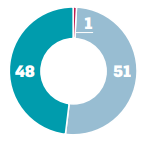
Term 3–4 2017
Awareness and confidence to work with Te Whāriki (July, 2018)
- High level of awareness
- Growing confidence
- Less confident to work with Te Whāriki (2017) to support Māori children to enjoy educational success as Māori
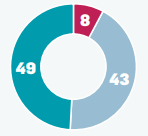
Term 1 2018
Engaging with Te Whāriki (November, 2018)
- High level of awareness
- Nearly half of services beginning to engage with Te Whāriki (2017)
- Less confident to work with Te Whāriki (2017) to support Māori children to enjoy educational success as Māori
Action
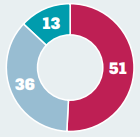
Term 2–3 2018
Preparedness to implement Te Whāriki 13 (June, 2019)
- Over half the services were not prepared to implement Te Whāriki (2017)
- Most services were not well prepared to review and design a local curriculum based on priorities for children’s learning
- There was variability in leaders’ and kaiako understanding of what is meant by ‘local curriculum’
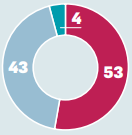
Term 4 2018
Deciding what learning matters here
- Many services had taken some steps to identify priorities
- Few services reflected these priorities in their local curriculum
- Leaders and kaiako were not sufficiently using professional learning and development and internal evaluation to support them to focus on deciding what learning matters here
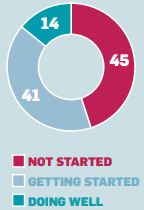
Term 1 2019
Learning-focused partnerships with parents and whānau
- Leaders and kaiako in most services had positive relationships with parents and whānau
- Leaders and kaiako did not link parents’ and whānau aspirations and what they know about their children with priorities for children’s learning, children’s progress and next steps
- Many leaders and kaiako did not understand how to weave a local curriculum in partnership with parents and whānau
- There was variability in how well leaders and kaiako were using internal evaluation to evaluate and improve their engagement with parents and whānau
Leaders and kaiako in half of the 290 services were not yet focused on deciding what learning matters here as they implemented Te Whāriki
Many services had taken some steps to identify priorities
- Steps included:
- philosophy review or development
- consultation with parents and whānau (usually through surveys)
- considering kaiako interests, knowledge and strengths
- recognising children’s strengths, interests and needs
- Priorities varied in their focus on children’s learning and learning outcomes; few priorities considered the learning outcomes in Te Whāriki
- Service leaders and kaiako generally only considered a narrow set of information when determining priorities, so they were not a strong, rich base for the local curriculum
- When services had not taken steps to identify their priorities:
- other issues were taking priority
- kaiako were still developing their understanding of the implications of Te Whāriki for their practice.
Few services reflected the learning priorities in their local curriculum
- Where services were doing well, they had become more purposeful in their curriculum design, and had changed programmes and routines to support their learning priorities
- Over one quarter of services were unable to show how learning priorities were reflected in their local curriculum, assessment, planning or teaching practices. In these services:
- learning priorities were not yet understood or identified
- assessment and planning practices were poor quality
- curriculum focused on kaiako priorities, rather than those of whānau and children
- Fewer than half the services reflected their learning priorities in assessment and planning, and there was variability in how well this was done. In these services:
- kaiako were focusing on building their capability to recognise learning and identifying learning outcomes
- there was an emphasis on learning priorities for individuals, but not linked to priorities to inform a local curriculum.
Leaders and kaiako were not sufficiently using internal evaluation, or their engagement with professional learning and development to support their focus on deciding what learning matters here
- Most had participated in professional learning and development (PLD) about Te Whāriki (2017), including the webinar series, workshops, and internal PLD such as staff discussions and team meetings, but for many, this did not lead to shifts in practice
- Where PLD helped, leaders and kaiako:
- chose PLD relevant to them, their service and philosophy, was timely and helped them develop their understanding of what learning matters here and a local curriculum
- encouraged whole-team involvement and professional dialogue
- Most services had some internal evaluation practices
- most used internal evaluation as part of identifying their priorities
- about one-third had not considered their learning priorities in internal evaluation
- only a few evaluated effectiveness of implementation or children’s progress in relation to the priorities.
|
Service Type |
Number of services in sample |
Percentage of services in sample |
National percentage of services (as at 2 September 2019) |
|---|---|---|---|
|
Education and care |
184 |
64% |
64% |
|
Kindergarten |
41 |
14% |
16% |
|
Home-based |
38 |
13% |
11% |
|
Playcentre |
27 |
9% |
9% |
The 290 services visited were representative of the national spread.
Leaders and kaiako in most of the 133 services had positive relationships with parents and whānau, but these were not always learning-focused partnerships
Leaders and kaiako did not link parents’ and whānau aspirations and what they know about their children with priorities for children’s learning, children’s progress and next steps
- Parents and whānau in many services were invited to contribute to their service’s vision, philosophy and goals; share about their child’s language, culture and identity; and their aspirations for their child in a variety of ways
- A few services personalised learning outcomes for children, or identified children’s next steps for learning, but did not involve parents and whānau in this
- Half the services did not do a good job of partnering with parents to use what parents knew and valued to personalise children’s learning outcomes or identifying their progress and next steps for learning.
- In these services:
- kaiako had limited understanding of Te Whāriki
- assessment and planning processes were poor in general.
Many leaders and kaiako did not understand how to weave a local curriculum in partnership with parents and whānau
- Only one-fifth of services had done a good job of weaving parents’ and whānau input into their local curriculum and associated planning and assessment. In services doing well:
- leaders and kaiako used information from parents alongside other information to weave a local curriculum
- parents were included as partners in planning and assessment
- some leaders and kaiako worked to increase parents’ and whānau understanding of Te Whāriki and assessment
- Nearly one-third of services were not doing this well at all. In services not doing well:
- leaders and kaiako had limited understanding of assessment and planning in general
- they did not have a deliberately considered local curriculum, or it was of poor quality
- a few had a local curriculum, but this was developed without considering parents’ and whānau input.
There was variability in how well leaders and kaiako were using internal evaluation to evaluate and improve their engagement with parents and whānau
- Almost one-quarter of services made good use of internal evaluation to understand how well they were engaging with parents and whānau to support children’s learning. In these services:
- leaders and kaiako inquired about their engagement with parents and whānau
- leaders and kaiako inquired with parents and whānau
- they made changes based on what they learned, to improve outcomes for children.
- In the third of services where internal evaluation was not supporting engagement with parents and whānau:
- internal evaluation was poorly understood in general
- inquiries and reviews did not identify next steps or areas to improve
- a few had not thought to evaluate their engagement with parents and whānau or how to use this to support children’s learning.
|
Service Type |
Number of services in sample |
Percentage of services in sample |
National percentage of services (as at 2 September 2019) |
|---|---|---|---|
|
Education and care |
69 |
52% |
64% |
|
Kindergarten |
32 |
24% |
16% |
|
Home-based |
8 |
6% |
11% |
|
Playcentre |
24 |
18% |
9% |
There were more playcentres and fewer of the other three service types than is representative of the national spread.
What did ‘doing well’ look like?
We made a judgment about how well a service was doing based on conversations with leaders and kaiako, relevant documentation, and observations of the service. We used the following criteria:
Deciding what learning matters for their service:
Leaders and kaiako were highly focused on deciding what learning matters in their service as they implemented Te Whāriki
The learning that matters here is clearly evident in the local curriculum and associated assessment and planning, and in teaching practice.
Internal evaluation processes have helped leaders and kaiako to determine their priorities and evaluate how well children are progressing in relation to these priorities.
Strong pedagogical leadership supports decision making about what learning matters here.
Leaders and kaiako have:
- engaged in PLD to support them to identify and focus on deciding what learning matters for the children and whānau in their service
- developed/reviewed their philosophy (and vision) to ensure what matters to the service is explicit.
Consideration has been given to the 20 learning outcomes in Te Whāriki and 3-5 of the following:
- children’s strengths, interests and needs
- the goals children have for themselves
- the goals and aspirations parents and whānau have for their children
- the goals and aspirations of the wider community
- kaiako interests, knowledge and strengths.
Leaders and kaiako were somewhat focused on deciding what learning matters in their service as they implemented Te Whāriki
The learning that matters here is starting to inform the local curriculum and associated assessment and planning, and in teaching practice.
Internal evaluation processes are helping leaders and kaiako to determine their priorities.
Pedagogical leadership is supporting decision-making about what learning matters here.
Leaders and kaiako have begun to:
- engage in PLD to identify and focus on deciding what learning matters for the children and whānau in their service
- develop/review their philosophy (and vision) to make explicit what matters in their service.
Consideration is being given to the 20 learning outcomes in Te Whāriki and at least two of the following:
- children’s strengths, interests and needs
- the goals children have for themselves
- the goals and aspirations parents and whānau have for their children
- the goals and aspirations of the wider community
- kaiako interests, knowledge and strengths.
Leaders and kaiako were not focused on deciding what learning matters in their service as they implemented Te Whāriki
Leaders and kaiako are yet to:
- Consider what learning matters for their children
- access PLD to support them to identify and focus on what learning matters for the children and whānau in their service
- review their philosophy (and vision) to make explicit what learning matters in their service
- make visible what learning matters in their service in their local curriculum and associated assessment and planning, and in teaching practice
- implement internal evaluation processes that help leaders and kaiako to determine their priorities.
An important aspect many services did not adequately consider, was alignment between deciding what learning matters here and the 20 learning outcomes in Te Whāriki.
Learning-focused partnerships with parents and whānau:
Leaders and kaiako were HIGHLY ENGAGED in learning-focused partnerships with parents and whānau as they implemented Te Whāriki
Leaders and kaiako regularly share assessment information about children’s progress and learning with parents and whānau and collaborate in planning for their child’s learning.
Internal evaluation provides evidence of the impact of policies and practices on strengthening engagement with parents and whānau. Leaders and kaiako know the impact of their learning partnerships with parents and whānau on children’s learning.
Authentic learning-focused partnerships enable parents and whānau to contribute to:
- the service’s vision, philosophy, goals and priorities for children’s learning as expressed in the local curriculum
- the priorities for their child’s learning and development, including the aspirations they have for the child and how these related to the learning outcomes in Te Whāriki
- discussions about their child’s progress and learning across service and home contexts.
The local curriculum and associated planning and assessment is highly responsive and strongly reflects:
- the aspirations parents and whānau have for their children
- the priorities identified for children’s learning through high levels of engagement with parents and whānau
- children’s language, culture and identity
- shared understandings about children’s developing capabilities, interests and need for support.
Leaders and kaiako were beginning to engage in learning-focused partnerships with parents and whānau as they implemented Te Whāriki
Leaders and kaiako are sharing assessment information with parents and whānau and seeking their input into planning for their children’s learning.
Internal evaluation is helping leaders and kaiako begin to evaluate and improve their engagement with parents and whānau, and identify the impact of this engagement on children’s learning.
Authentic learning-focused partnerships are being developed that enable parents and whānau to contribute to:
- the service’s vision, philosophy, goals and priorities for children’s learning
- the priorities for their child’s learning and development, including the aspirations they have for the child and how these related to the learning outcomes in Te Whāriki
- discussions about their child’s progress and learning across service and home contexts.
The local curriculum and associated planning and assessment is beginning to:
- be more responsive to the aspirations parents and whānau have for their children
- reflect some of the service’s priorities for children’s learning identified through engagement with parents and whānau
- acknowledge and respond to children’s language, culture and identity
- reflect shared understanding of children’s developing capabilities, interests and need for support.
Leaders and kaiako were yet to engage in learning-focused partnerships with parents and whānau as they implemented Te Whāriki
Leaders and kaiako share limited assessment information with parents and whānau and do not seek their input into planning for their child’s learning.
Internal evaluation is not focused on improving engagement with parents and whānau.
Leaders and kaiako are very much focused on developing relationships with parents and whānau. They are not yet engaging in authentic learning- focused partnerships.
Leaders and kaiako do not seek parents and whānau input into the service’s vision, philosophy, goals and priorities for children’s learning.
The local curriculum and associated planning and assessment is not responsive to parent and whānau aspirations (if these are sought).
The curriculum does not acknowledge or respond to children’s language, culture and identity.
The most common areas that made the difference between a service being judged as ‘beginning to engage’ and ‘highly engaged’ were: using the information parents and whānau had shared to weave a local curriculum; and the strength of internal evaluation.
One service’s story of building on relationships with parents and whānau to develop learning-focused partnerships
Leaders and kaiako in this early learning service worked to establish strong, respectful relationships as the foundation for parents, whānau and the community to develop trusting learning partnerships. Leaders and kaiako believed when parents and whānau felt a sense of belonging to the service, they would be comfortable to share what they knew about their children and work with kaiako around their aspirations for their children.
Kaiako used a variety of strategies to take the relationship to the level of a learning- focused partnership. They deliberately made time for face-to-face conversations about children’s developing interests, capabilities and need for support. Kaiako had informal conversations with parents about their children’s learning at least once a week, and formal conversations at scheduled times through the year. When kaiako wrote a new learning story for a child, they personally shared the story with the child’s parents, and invited their suggestions for how to strengthen the learning.
Kaiako invited parents to record their aspirations for their children on ‘feathers’ which they displayed in a ‘Cloak of Dreams’ in the service – keeping the aspirations current and visible. They used these aspirations to inform their priorities for children’s learning, and from there develop a local curriculum meaningful to the children and their parents and whānau. Other information used in developing their priorities were the 20 Learning Outcomes in Te Whāriki, the governing body’s priorities and kaiako strengths and interests.
Kaiako made links between what they knew about children’s home lives, and the learning happening in the service. They invited parents to contribute to children’s assessment, and partnered with parents to decide the next steps for children’s learning. This was particularly strong when the child had special needs. Kaiako respected and valued what parents knew about their children and the insights they provided.
These learning-focused partnerships meant many parents and whānau were comfortable being actively involved in the life of the service; they contributed to the programme, spent time at the service and joined in excursions. Collaborating authentically with parents meant kaiako were also able to respond to children in ways that recognised and respected the children’s language, culture and identity. Children experienced authentic learning opportunities, meaningful to them and their whānau, and assessment recognised children’s learning both in the service, and at home.
We continue to recommend leaders and kaiako:
- engage more deeply with Te Whāriki to build a shared understanding of expectations associated with reviewing and designing their local curriculum
- provide appropriate time and resources to support collaborative teacher inquiry
- identify their PLD needs, so they can select PLD that is timely and relevant
- unpack and discuss the learning outcomes in Te Whāriki as part of their assessment, planning and evaluation processes.
We recommend the Ministry of Education work with the sector to:
- provide resources, guidance and exemplars to support services to understand what a local curriculum is, and how to develop their own
- provide resources, guidance and exemplars to support leaders and kaiako to be confident in knowing how to support Māori children to enjoy educational success as Māori.
To support improvement, ERO is:
- developing a new approach to evaluating quality in early childhood services, supported by recently updated indicators of quality
- supporting services to implement robust internal evaluation and associated quality improvement planning that sets out the actions being taken to improve quality, using the indicators of quality
- focusing on the impact of improvement actions for children, and their progress towards the learning outcomes in Te Whāriki.
